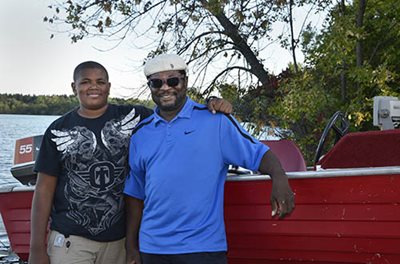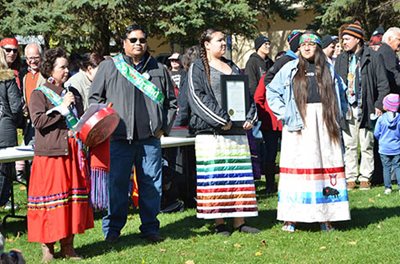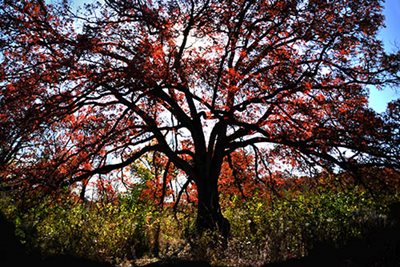Metro residents get their say before adoption in December
The seven-county metro area has nearly 55,000 acres of regional parks and park reserves, 400 miles of regional trails, and even more reasons to visit and love them.
 That’s why residents across the region are being asked to weigh in on the draft update of the 2040 Regional Parks Policy Plan. The plan calls for expanding the network of parks and trails, including the addition of two potential “water trail” parks.
That’s why residents across the region are being asked to weigh in on the draft update of the 2040 Regional Parks Policy Plan. The plan calls for expanding the network of parks and trails, including the addition of two potential “water trail” parks.
“Policymaking and planning may not top your list of fun activities on any given day,” said Council Chair Charlie Zelle. “But policy and plans lead to decisions on issues that really matter to you, like access and proximity to places to play, walk, bike, enjoy wildlife and some calming fresh air.”
The 2040 Parks Policy Plan establishes the long-range vision for regional parks and trails and identifies the steps that will get us there. The plan is the work of many partners, including regional park agencies, the Metropolitan Parks and Open Space Commission, and park enthusiasts and advocates throughout the region.
“Parks have a significant role in protecting and preserving wildlife and natural resources, safeguarding our mental and physical health, and mitigating climate change,” said Zelle. “I encourage and invite residents to review the draft plan, give us your thoughts, and engage in decision making.”
Addition, expansion: The heart of the plan update
The current network of parks and trails in the region is composed of 56 regional parks and park reserves, eight special recreation features, and 49 regional trails that cover some 400 miles.
.aspx?width=400&height=264) “The planned network of regional parks and trails is largely in place, particularly in the urban center, where some needed refinements and adjustments are in the works,” said the Council’s Parks Manager Emmett Mullin. “The purchase of park land continues at the edges of the region, but the real opportunities for growth are within the regional trails system.”
“The planned network of regional parks and trails is largely in place, particularly in the urban center, where some needed refinements and adjustments are in the works,” said the Council’s Parks Manager Emmett Mullin. “The purchase of park land continues at the edges of the region, but the real opportunities for growth are within the regional trails system.”
Mullin says a key focus of this policy update is better connections, or “bridges” among and between local and regional parks, park reserves, and special recreation features. An emphasis on equity, he said, is intentional and steadfast.
“We want to ensure that people across the region, of all races, ages, ethnicities, and incomes, can get to and take advantage of the region’s vast and renowned natural resources,” he said.
The draft 2040 plan update includes:
-
26 new and expanded regional parks, trails, and search areas for future parks, trails, and trail extensions.
-
Addition of a “bridging facility” special recreation feature to introduce new visitors to regional parks and trails and provide more equitable access.
-
Consideration of two “water trail” parks that provide safe places for people to paddle creeks and rivers.
-
Requirement to include an equity analysis in park agency master plans for regional parks and trails to help identify who benefits and is affected by proposed park investments.
-
Clarifications on adjusting regional park boundaries.

Future of the parks includes reconsidering history
The draft policy update includes work plans and studies that will help to inform future Council planning. This work that will recognize the history and cultural aspects of regional park land and envision the path forward in developing more regional trails. Topics include:
-
Reconsidering history: Explore ways to acknowledge and recognize the history of park land that was home to indigenous people. Honoring that history warrants broader regional conversation.
-
Cultural-historical study: Document and describe the effects of past policy on inequities in the regional parks system.
-
Vision for regional trails: Develop a long-term plan for regional trails that incorporates geographic balance, equitable use and access, and protection of natural resources.
But don’t leave the plan up to just the planners. The parks are yours. Council staff, working with partners, are offering a menu of options to get you engaged in decision making about the future of the regional park system.
How you can have a voice
Comment on the draft plan through October 30, by 5 p.m.

Topics on which to comment
Adding parks and trails — Record use of the regional parks system in 2019 reinforces the Council’s plans to add parks and trails to the system. People use the region’s parks for connecting with family and friends, building community, picnicking, camping, hiking, biking, and being in nature, among other popular activities.
Reconsidering history — Regional parks and trails are on lands that the Anishinaabe and Dakota people have long cared for and call home. The lands hold great historical, spiritual, and personal significance for these original stewards, the Tribal nations, and the peoples of the region. The Council, in partnership with the 10 parks agencies that own and operate the regional parks, seeks to honor this history through land acknowledgment and broader regional conversation.
Equitable access — The regional parks system will gain a new type of special recreation feature called a “bridging facility” with this update. The goal of this facility will be to ensure our parks encourage broader participation by people of different races, ethnicities, national origins, ages, abilities and income. This update will also consider establishing a “water trail” park providing safe places for people to paddle creeks and rivers in the region.
Climate resilience — Trees are the lungs of the atmosphere, cleaning the air of pollutants for a more resilient future climate. Park land plays a significant role in mitigating climate change — keeping us healthy, protecting water, providing habitats, moderating temperature, and teaching future generations about nature. By expanding the parks system, we’re fighting pollution, managing water, and providing critical habitats.
The Council expects to adopt the updated 2040 Regional Parks Policy Plan in December.
Learn more about the draft amendment to the parks policy plan